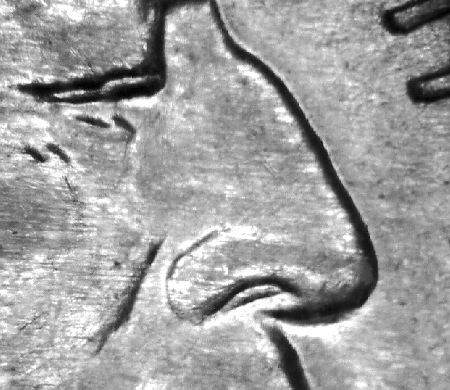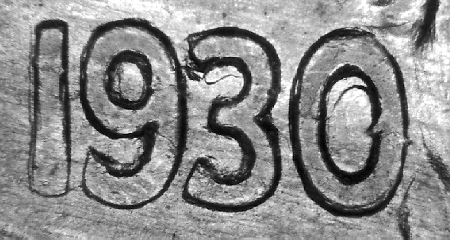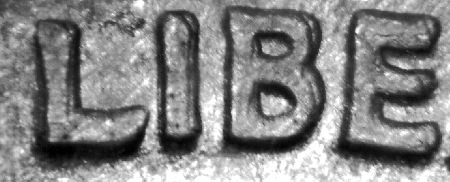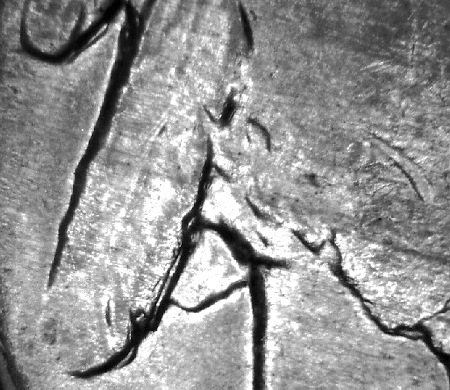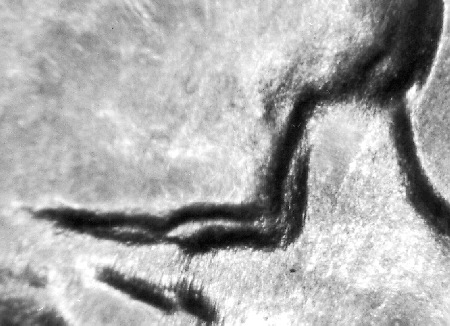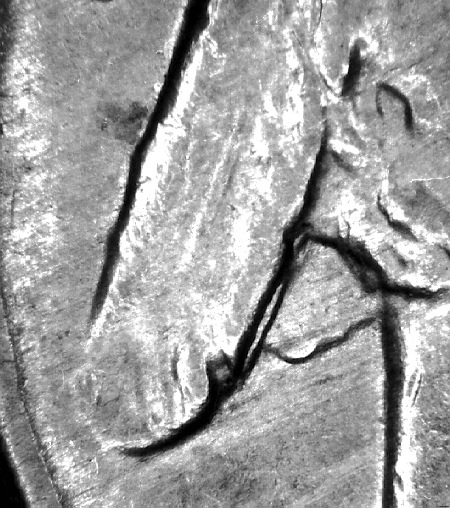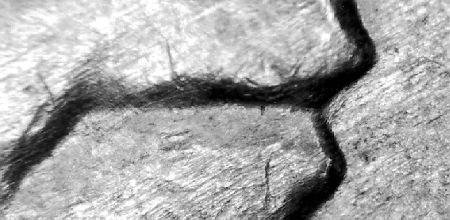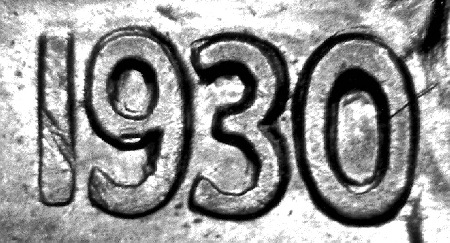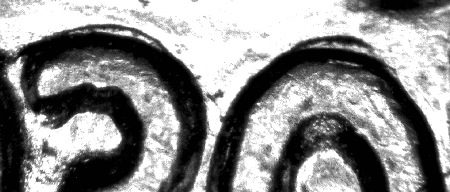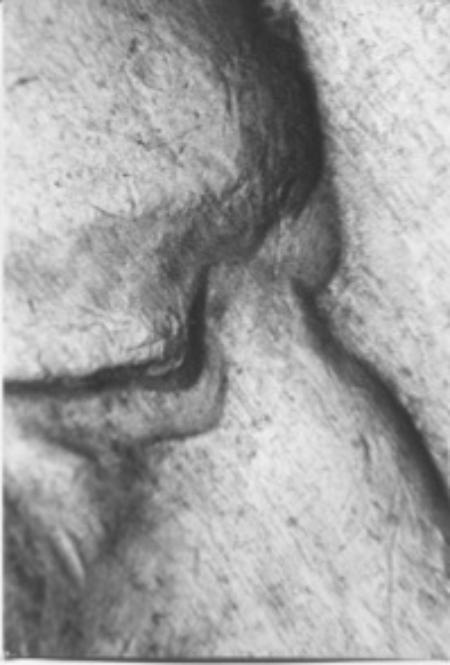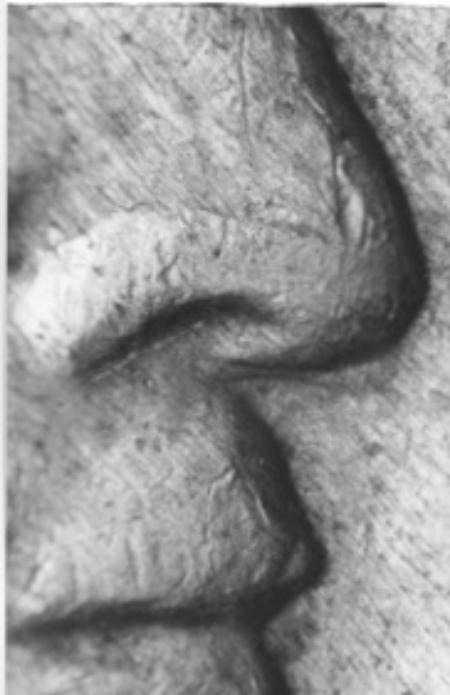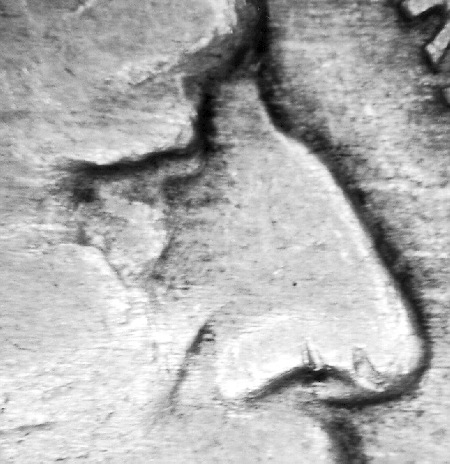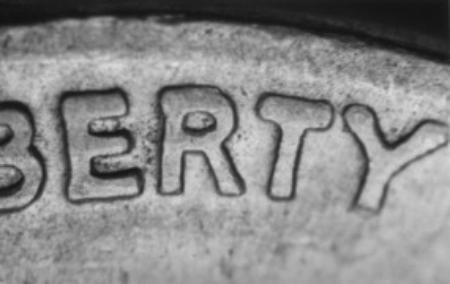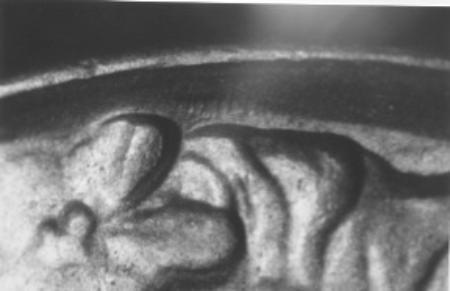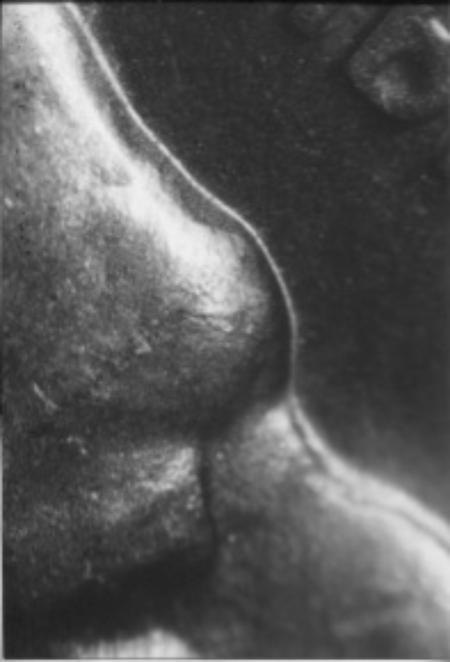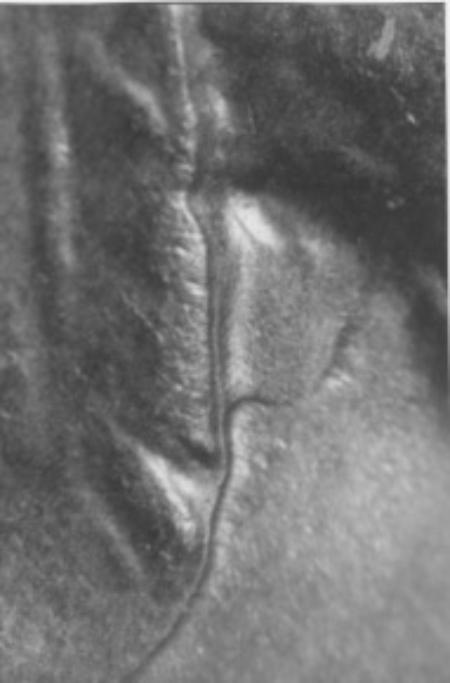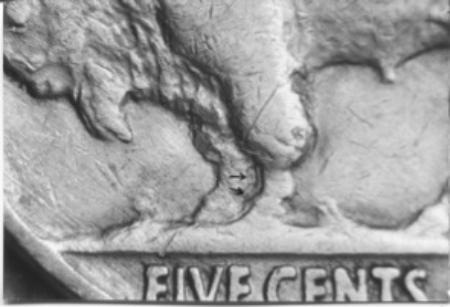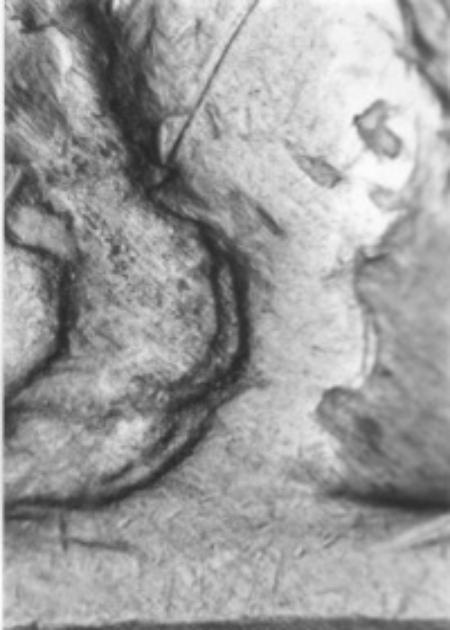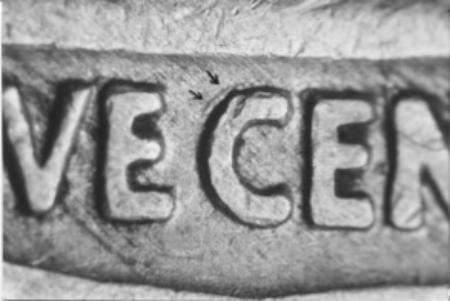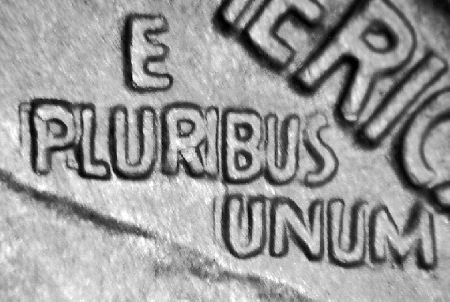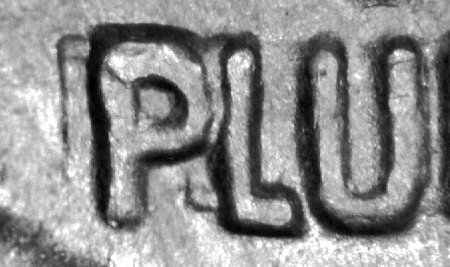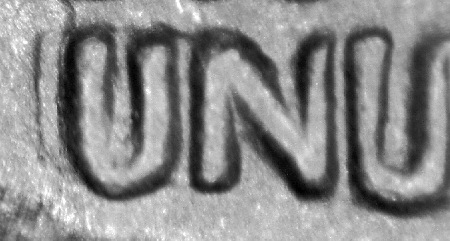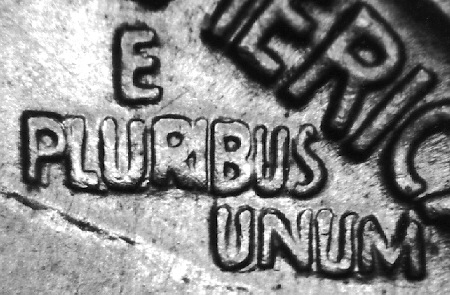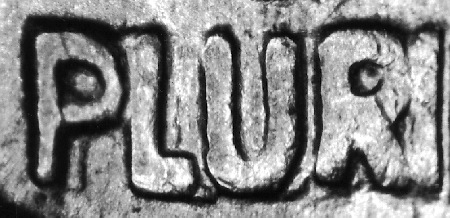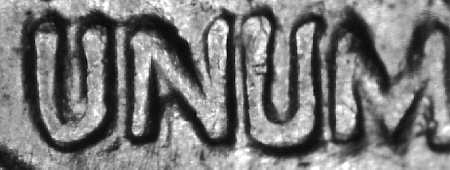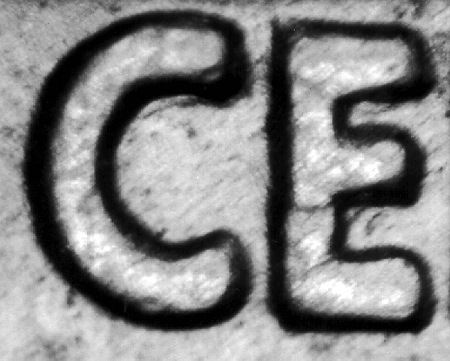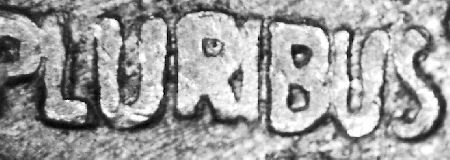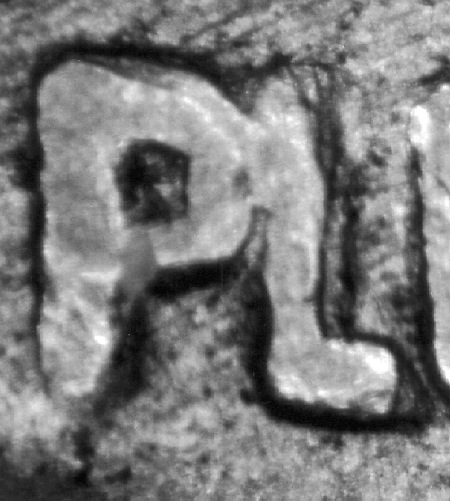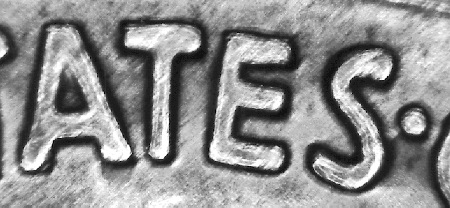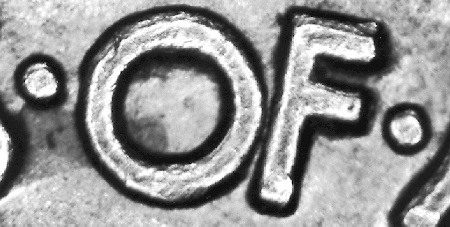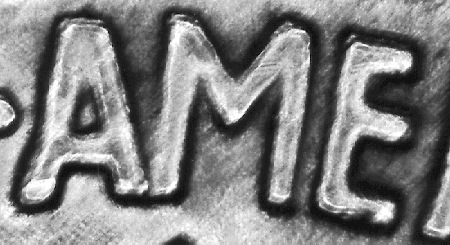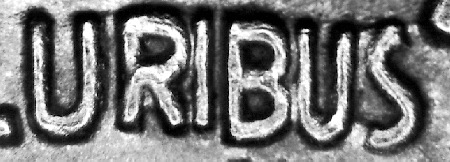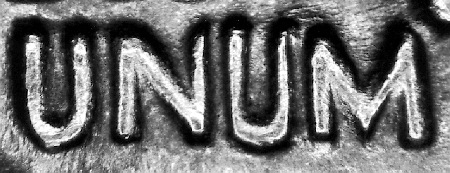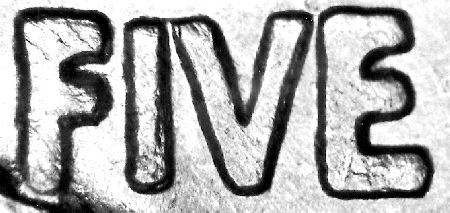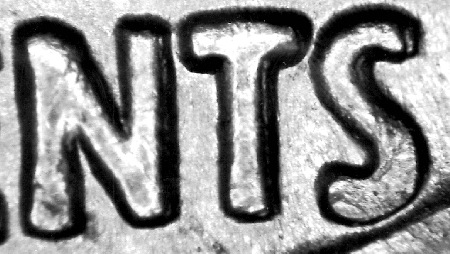


 |
 |
 |
 |
 |
 |
 |
 |
 |
 |
 |
 |
 |
 |
 |
 |
 |
 |
 |
 |
 |
 |
 |
 |
1930 5¢ WDDO-001 “Best Of” Variety Description: A Class IV spread to the NW shows on the date, the eyelid, the nostril, both feathers, and the letters of LIBERTY. Die Markers: Obverse: A die crack runs from the rim at about 10:00 through the upper back of the head and back to the rim at 12:00. Reverse: None noted. Submitted By: Ron Pope Cross References: CONECA: 1-O-IV, Cherrypickers: FS-05-1930-101 (017), Breen: #2639
1930 5¢ WDDO-002 “Best Of” Variety Description: A Class IV spread to the NW shows on the upper eyelid, the nostril, under the tip of the nose, under the upper lip, and on the lower right side of the large feather. Die Markers: Obverse: None noted. Reverse: A die chip can be found in front of the bison’s ear. Submitted By: Brian Raines Cross References: None known
1930 5¢ WDDO-003 Description: A close Class IV spread to the east shows on the 193 in the date. Die Markers: Obverse: None noted. Reverse: None noted. Submitted By: Leroy Van Allen Cross References: None known
1930 5¢ WDDO-004 "Best Of" Variety Description: A Class IV spread to the north shows on the upper eyelid and the lower right side of the large feather. Slight doubling also shows on the lower lip. Die Markers: Obverse: Short die scratches can be found between the two ribbons. Reverse: A die scratch runs from the E to the P in EPU. Submitted By: Ron Pope Cross References: None known
1930 5¢ WDDO-005 Description: A close spread to the south shows on the top of the 3 and 0 in the date. Die Markers: Obverse: None noted. Reverse: A die crack runs through the base of the mound. Submitted By: Leroy Van Allen Cross References: None known
1930 5¢ WDDO-006 "Best Of" Variety Description: A Class IV spread to the northwest shows on the upper eyelid, the brow, and the large feather. Slight doubling also shows on the date and the tip of the nose. Die Markers: Obverse: None noted. Reverse: None noted. Submitted By: Brian Raines Cross References: None known
1930 5¢ WDDO-007 Description: A Class IV spread to the north shows on the upper eyelid and the large feather. Die Markers: Obverse: Die clash marks can be found under the chin. Reverse: Die clash marks can be found below UNUM. Submitted By: Brian Raines Cross References: None known
1930 5¢ WDDO-008 Description: A Class VI spread towards the center shows on LIBERTY and the date. Die Markers: Obverse: Die scratch from the center of the B ESE to the E of LIBERTY. Reverse: None noted. Submitted By: Ed Hock Cross References: None known
1930 5¢ WDDO-009 Description: A Class IV spread shows on the date and the right side of the large feather. Die Markers: Obverse: Die clash above the back of the head near rim. Die crack on lower forehead above nose. Reverse: None noted. Submitted By: John Pirro Cross References: None known
1930 5¢ WDDR-001 "Best Of" Variety Description: A Class IV spread to the southeast shows well on the left front leg. Some doubling also shows on the neck, the right front leg, EPU, and FIVE CENTS. Die Markers: Obverse Stage A: None noted. Obverse Stage B: None noted. Obverse Stage C: None noted. Reverse Stage A: A raised lump of metal can be found on the lower left rear leg. Reverse Stage B: A triangular die gouge can be found next to the T in CENTS. Reverse Stage C: A die chip can be found at the front of the bison’s head. Submitted By: Sam Lukes Cross References: CONECA: 1-R-IV, Cherrypickers: FS-05-1930-801 (017.5) Comments: This variety is frequently referred to as “The five-legged Buffalo” variety.
1930 5¢ WDDR-002 “Best Of” Variety Description: A Class IV spread to the ESE shows on PLURIBUS UNUM showing best of the PL of PLURIBUS and the first U in UNUM. Doubling spread to the west shows on the folds of the neck. Die Markers: Obverse: None noted. Reverse: None noted. Submitted By: Ron Pope Cross References: CONECA: 2-R-IV, Cherrypickers: FS-05-1930-802 (017.3)
1930 5¢ WDDR-003 “Best Of” Variety Description: A Class IV spread to the west shows on the E, the PLURI in PLURIBUS, and the UN in UNUM. Doubling also shows on the back of the left rear leg. Die Markers: Obverse: None noted. Reverse: None noted. Submitted By: Brian Raines Cross References: CONECA: 3-R-IV, Cherrypickers: FS-05-1930-803 (017.4)
1930 5¢ WDDR-004 Description: Doubling shows on the bottom of the E, the bottom of the L in PLURIBUS, under the top of the E in FIVE, and under the top of the CE in CENT. Doubling also shows on the back of the left rear leg and the bottom fur of the left front leg. Die Markers: Obverse: None noted. Reverse: None noted. Submitted By: Mark Lafferty Cross References: None known
1930 5¢ WDDR-005 Description: Doubling shows on the right side of the letters in PLURIBUS, especially the L. Die Markers: Obverse: None noted. Reverse: None noted. Submitted By: Leroy Van Allen Cross References: None known
1930 5¢ WDDR-006 Description: A Class II spread towards the center shows on USA, EPU, slightly on FIVE CENTS, and on the back of the left rear leg. Die Markers: Obverse: None noted. Reverse: Die scratch above the tail. Submitted By: Larry Briggs Cross References: None known
1930 5¢ WDDR-007 Description: A Class IV spread towards the west shows on the IV of FIVE, the NTS of CENTS, and slightly on some of the letters in EPU. Die Markers: Obverse: None noted. Reverse: None noted. Submitted By: Dennis Paulsen Cross References: None known
| ||



